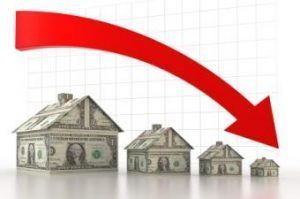 The number of loans in forbearance continues to drop, falling this week to 4.47%, down from last week’s total of 4.49% according to the Mortgage Bankers Association’s (MBA) latest Forbearance and Call Volume Survey. Nationwide, the MBA estimates that 2.23 million Americans remain in some stage of forbearance.
The number of loans in forbearance continues to drop, falling this week to 4.47%, down from last week’s total of 4.49% according to the Mortgage Bankers Association’s (MBA) latest Forbearance and Call Volume Survey. Nationwide, the MBA estimates that 2.23 million Americans remain in some stage of forbearance.
By investor type, the share of Fannie Mae and Freddie Mac loans in forbearance decreased two points, from 2.44% to 2.42%, while Ginnie Mae loans in forbearance decreased from 6.09% basis points to 6.02%.
The forbearance share for portfolio loans and private-label securities (PLS) increased by 13 basis points to 8.55%. The percentage of loans in forbearance for independent mortgage bank (IMB) servicers decreased two basis points to 4.70%, and the percentage of loans in forbearance for depository servicers also declined two basis points to 4.62%.
“The share of loans in forbearance decreased for the ninth straight week, dropping by two basis points. The rate of exits has slowed the past two weeks, with this week’s exit rate reaching the lowest since February,” said Mike Fratantoni, MBA’s SVP and Chief Economist. “The increase in the forbearance share for portfolio and PLS loans highlights both the ongoing buyouts of delinquent loans from Ginnie Mae pools, as well as an increased forbearance share for other loans that are not federally backed.”
By stage, 12.8% of the total loans in forbearance were in the initial forbearance plan stage, while 82.3% were in a forbearance extension, and the remaining 4.9% were forbearance re-entries.
Unemployment numbers continue to decline, as the most recent report from the U.S. Department of Labor found that for the week ending April 24, unemployment claims stood at 553,000, a decrease of 13,000 from the previous week's level. As more Americans return to the workforce, the more currently in forbearance plans will exit.
“Job market and housing market data remain strong,” said Fratantoni. “We expect that further gains in hiring will help to support many homeowners as they exit forbearance in the months ahead.”
Citing the number of homeowners behind on their mortgage has doubled since the beginning of the pandemic, the Consumer Financial Protection Bureau (CFPB) proposed changes to prevent impending foreclosure actions with emergency federal foreclosure protections eventually set to expire.
“The nation has endured more than a year of a deadly pandemic and a punishing economic crisis,” said CFPB Acting Director Dave Uejio. “We must not lose sight of the dangers so many consumers still face.”
The MBA noted that, of the cumulative forbearance exits for the period from June 1, 2020 through April 25, 2021:
- 27% resulted in a loan deferral/partial claim.
- 25.3% represented borrowers who continued to make their monthly payments during their forbearance period.
- 14.6% represented borrowers who did not make all of their monthly payments and exited forbearance without a loss mitigation plan in place yet.
- 14.4% resulted in reinstatements, in which past-due amounts are paid back when exiting forbearance.
- 9.6% resulted in a loan modification or trial loan modification.
- 7.5% resulted in loans paid off through either a refinance or by selling the home.
- The remaining 1.6% resulted in repayment plans, short sales, deed-in-lieus or other reasons.
In terms of weekly servicer call center volume, the volume of calls decreased from the previous week, from 8.5% to 6.4%, with the average call length remaining at approximately eight minutes.

 DSNews The homepage of the servicing industry
DSNews The homepage of the servicing industry









